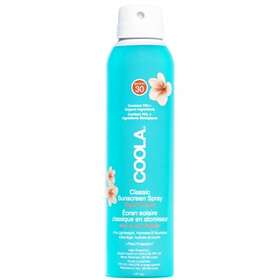

#Buy coola sunscreen how to#
(For more tips on how to make each ride safer, faster, and better, subscribe to Bicycling magazine today!) Our Picks Aerosols protect just as well, they say, but they can be more challenging to apply evenly, are easier to sweat off, and require extra care not to breathe in the spray. Both experts prefer gels or lotion over spray-on options. So it’s best to pick a sunscreen that you can afford use often-even if it means stopping to reapply once or twice during a long ride. Likewise, if you ride often, you’ll go through more sunscreen. Sweat enough, and you’ll eventually need to reapply your sunscreen. Erring on the side of over application is always a good bet. Remember also that you can get significant sunburn through modern lightweight kits, so it's a good idea to apply to your back, shoulders, thighs and other areas if you'll be exposed to sunlight for a long period of time.
#Buy coola sunscreen skin#
Goldman suggests applying sunscreen to all exposed skin about 15 minutes before every ride. So, if you find yourself on vacation abroad this summer, it might be time to stock up! Proper Useĭr. “In the United States, only two ingredients offer strong UVA protection,” says Lunder. The EU and Britain have approved four additional active ingredients since 2003 (Tinosorb S, Tinosorb M, Mexoryl SX and Mexoryl XL), which the Environmental Working Group believes offer superior protection. (Although there are a total of eight active ingredients approved by the FDA, no new ones have been approved since 1996). Most sunscreens sold in the Unites States use just one of two active ingredients, zinc oxide in physical sunscreens and avobenzone in chemical products. An SPF 50 sunscreen that is properly applied will block 98 percent of UVB rays a SPF 100 sunscreen will block 99 percent.” Rather than buying a higher SPF, Lunder suggests applying more of a 30 to 50 SPF product every two hours. Lunder says that sunscreens listing an SPF over 50 don’t seem to be worth the upcharge. RELATED: I Tried 5 Different Sunscreens to See Which Would Stay on My Sweaty Face, and Here's the Best One Which SPF Is Best for Cyclists?

Sonya Lunder, a senior research analyst at the Environmental Working Group who has studied sunscreens suggests that any sunscreen with more than three percent zinc oxide or avobenzone is ok, but notes that physical sunscreens are less likely to contain ingredients such as oxybenzone, which can cause allergic skin reactions. Goldman prefers the chemical type because they don’t leave a coating of white film from the zinc oxide. The other type, chemical sunscreens, use avobenzone and are absorbed into the skin. They do not penetrate to reach living skin cells or the bloodstream. Physical sunscreens contain zinc oxide and titanium dioxide and provide a physical barrier on the skin. There are two types of sunscreen, according to Dr.

“For athletes, the most important thing is that it is sweat and water proof,” he says.

Mitchel Goldman, MD, is a bike-racing dermatologist who is clear about what you should look for in sun protection. So we did some research and talked to leading experts to identify the best sunscreens for cyclists to protect your skin on future rides. The resulting red patches of skin are sunburn, and they’re not only sometimes painful but also can increase your risk of skin cancer. At some point, most of us have come back from a long, hot summer ride having spent too much time in the sun.


 0 kommentar(er)
0 kommentar(er)
